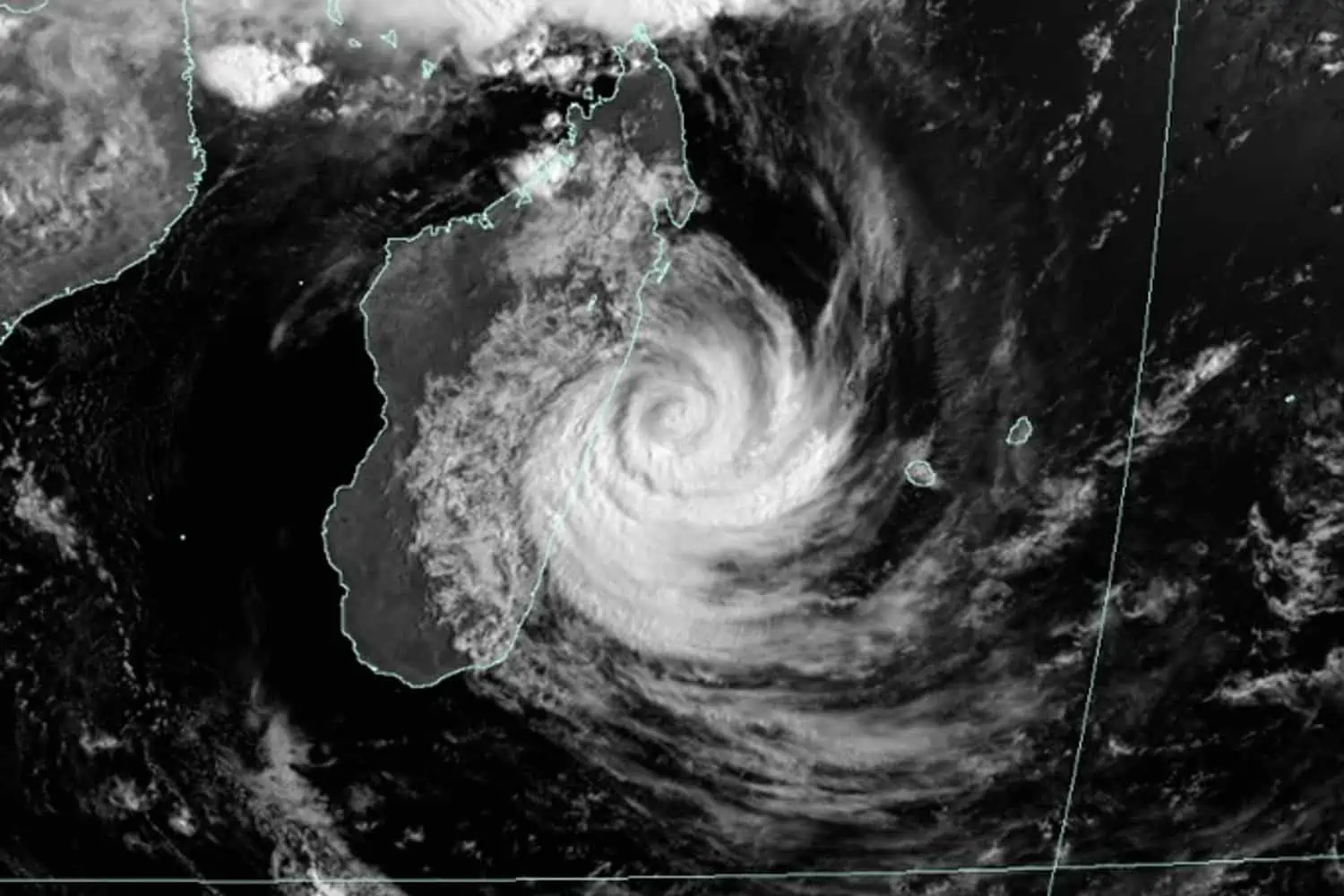First Cyclone Ana, a category three storm, hit at the end of January. Then, at the beginning of February, came Cyclone Batsirai, a category four storm. And now, the tropical island of Madagascar is bracing itself for another possibly level three cyclone, named Emnati.
Predicted as Category Three
On Monday morning the Joint Typhoon Warning Center measured cyclone Emnati as a category three storm. Displaying wind speeds of over 180 kilometers per hour. The storm had already reached it peak as a category four cyclone on Sunday, with roughly 210 kilometers per hour winds. After which it began to weaken. This is in part thanks to the cooler waters closer to Madagascar that were stirred up by the previous storms. However, the Joint Typhoon Warning Center (JTWC) predict the storm to maintain its category three strength as it hits the island.
When and Where Will Cyclone Emnati Hit?
With its current west-southwest direction and speed of 11 kilometers per hour, Emnati is scheduled to make landfall in southeastern Madagascar, as a category two or three storm, late Tuesday or early Wednesday.
The moderately populated area suspected to be most affected by the storm is preparing for extensive damage from heavy rain and strong winds. Vincent Dalonneau, Madagascar director of the aid agency Humanity & Inclusion says “We are preparing for a big one”. He adds that “Our teams are tired and still preparing for multiple emergencies at once.”
High Flood Risk Due to Deforestation
Experts have predicted that one of the biggest causes of destruction from Cyclone Emnati will be its rains of 100-200 millimeters. The excessive downpour will likely result in widespread flooding on an even larger scale than in the past. This is due to the notable deforestation Madagascar has experienced in recent years. In fact, Madagascar has lost 24% of its forest cover in the last two decades alone. This combined with its mountainous landscape means that waters will run quickly from higher points and cause more damage.
More to Come
According to the UN weather agency, Madagascar and the southern African region can expect another eight to 12 cyclones before the end of cyclone season in May.
